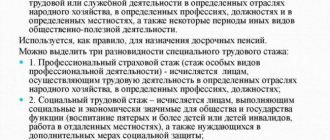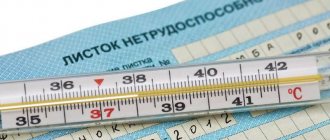What is ITU?
ITU was introduced in Russia after the adoption of Federal Law No. 181 “On the social protection of disabled people in the Russian Federation” on November 24, 1995. MSA stands for medical and social examination.
At its core, this is the same VTEC commission, but with expanded functionality to resolve issues related to the establishment of disability and incapacity, the organization of additional measures for the social protection of disabled people, such as their rehabilitation, and adaptation in society. VTEC solved these issues regarding the adult working population, while the functionality of the MSE makes it possible to resolve issues of establishing disability in children.
The medical and social examination bureaus today are under the department of the Ministry of Labor and Social Protection of the Russian Federation, in addition to the main bureau of the ITU, which is part of the structure of the Ministry of Health. The activities of ITU are regulated by the provisions of Order of the Ministry of Labor No. 310n dated October 11, 2012 “On approval of the Procedure for organizing the activities of federal government institutions of ITU”
How to get a duplicate of the ITU certificate
If you have already received an ITU certificate, but for some reason (it was spoiled, lost, or your last name changed due to marriage), then you can freely receive a duplicate of your document. This is confirmed by the order of the Ministry of Health and Social Development of the Russian Federation in 2010, number 1031n. To get a duplicate of the ITU certificate, simply submit a number of documents to the ITU: an identification document (passport, for example), an out-of-use ITU certificate (if you have one) and an application addressed to the head of the bureau. The application must contain a request for a duplicate copy of the ITU certificate, as well as a link to the order that we announced above. Please also indicate the reason for issuing the duplicate. For greater confidence, you can add a copy of the ISE certificate, which is in your personal pension file, to the package of documents. Ask for a copy to be certified with the seal of the pension organization.
ITU functions
Today the competencies of ITU include the following functions:
- Carrying out medical diagnostic procedures, on the basis of which the degree of incapacity and disability is assigned,
- Establishment of disability groups, causes and timing of its occurrence,
- Determining the degree of disability,
- Studying the cause-and-effect relationships of factors and conditions that led to disability,
- Development of an individual program for subsequent rehabilitation and adaptation of disabled people into society, establishing terms and types of work for medical, social and professional rehabilitation,
- Establishing the need to provide medical, social or professional rehabilitation to persons who have become disabled as a result of accidents while performing work duties,
Creation of rehabilitation programs for citizens who have become disabled as a result of occupational diseases or industrial accidents,
- Establishing the causes of death of a disabled person, if this fact provides for the provision of social support from the state to his family,
- Maintaining statistics of demographic indicators and accounting of citizens who have passed the ITU in the assigned territory,
- Development and implementation of programs aimed at social protection of people with disabilities and disability prevention,
- Consulting the population on passing the MSEC.
Statement of results
So, what kind of certificate is this and where can I get it? A citizen receives such a document after undergoing an examination at the ITU bureau. It contains information about the examination and a professional verdict. Such a certificate is issued to all people who are recognized as disabled. In addition, such an act indicates the degree of ability to work that was awarded to the person, as well as whether he needs to be transferred to easier work.
Important! Such a document is issued immediately after the decision is made. The ITU certificate is given to the person who has undergone this examination, and the extract is sent to the social security department or the Pension Fund.
Document requirements
This certificate must contain:
- Number and series of the certificate.
- Full name, date of birth and place of residence of the person to whom the certificate was issued.
- Date of disability determination.
- Disability group, degree of disability and cause of disability.
- The date until which the disability is valid.
- Seal of the ITU Bureau and signature of its head.
This is what a blank certificate of passing the ITU looks like in the photo:
Certificate of absence of disability
The bureau can also issue certificates of non-disability. Such a document must indicate its number, the date of the examination, as well as the full name of the person to whom the certificate was issued. There must also be a seal and signature of the head of the organization.
Organizational structure of the ITU system in Russia
- The ITU Bureau of a city and regional scale is opened based on the need to conduct 1800-2000 surveys per year with a population of a city or region of about 70,000 - 90,000 people. Their functions are described in detail above.
- The main ITU bureau for each subject of the Russian Federation is responsible for coordinating its departments, appealing decisions made by lower authorities, conducting repeated surveys on its own initiative to clarify or change the decision, and maintaining statistics in the allocated territory.
- The main bureau of the ITU of the federal medical and biological agency, which is responsible for conducting examinations of workers in a certain industry category, as well as when living and working in areas with hazardous working conditions.
- ITU Federal Bureau - exercises general control over all ITU divisions in the Russian Federation, including the Main Bureaus, conducts repeated examinations when appealing decisions made by lower authorities, or on its own initiative, conducts examinations in complex cases or cases that require additional consultations with specialists or technically complex examinations, conduct complex diagnostics using the latest technologies, initiate orders for scientific research and design work for the Federal Medical and Biological Agency, conduct statistical studies of disability issues, develop and implement rehabilitation and correctional programs for people with disabilities, and provide education and training for conducting MSE.
What tasks does the ITU bureau solve?
So, in total, 5 key tasks can be identified (some of them are briefly stated above and will be discussed):
1) Establishing disability - for this, doctors must check the compliance of the restrictions with the specified criteria, in other words, those who have persistent health problems caused by injuries, defects or diseases are considered disabled, and the ability to care for themselves is not fully manifested or lost (the same most concerns communication, doing work, etc.).
2) Development of an IPR for a disabled person (individual rehabilitation program) - we are talking about a specially developed document that contains a set of measures to compensate or restore lost abilities of the body, plus, the program may indicate the tasks and goals of the expected results with possible consequences and much more (for example , opportunity for training and work with recommendations).
3) Determination of the disability group - here we mean such categories as disability groups 1, 2 and 3 and separately “disabled child”. In any case, the key role is played by the severity of the violations, on the basis of which a specific group is assigned (for example, group 1 indicates severe restrictions).
4) Repeated examination - confirmation (extension) of disability for groups 2 and 3 is necessary every year, and for group 1 - every few years, unless, of course, the status is assigned for life. Disabled children can be examined once a year or several years until they reach adulthood, then the process is repeated and it is likely that the group will be given indefinitely (especially due to the lack of positive dynamics).
5) Identification of the causes of death of disabled people - to use this service, one of the family members of a deceased person with disabilities must write an application, attaching a package of documents (passport, copies of the death certificate and certificate of disability, an extract from the examination card of the pathologist). As a result, an expert opinion is formed (it has an electronic or paper form).
Several commissions with expert composition are created in each of the bureaus
- General commission
- Commission of specialized profiles: – to establish the disability of persons suffering from tuberculosis, – to establish disability due to mental personality disorder, – to establish disability associated with defects of the visual system, – to establish the disability of minor citizens,
- Mixed profile commissions.
The procedure and principles for conducting MSEC are established by the legislation of the Russian Federation in the form of separate instructions and regulations, as well as in the form of information letters from the Ministry of Health and Social Development of the Russian Federation.
Legislative documents approve the procedure for referral to the examination procedure, the procedure for organizing the work of the commission itself, the procedure for passing the examination and issuing documents.
Watch the video for an example of undergoing medical examination for diabetes.
Who is on the ITU Commission?
Based on clause 4 of the Procedure, approved. By Order of the Ministry of Labor No. 310n dated October 11, 2012, you can find out that the examination is carried out by specialists from a specific bureau (the one where the applicant applied). The commission should consist of three doctors and other professionals, if necessary (rehabilitation specialists, psychologists, etc.).
If the situation requires it, experts in adaptation and social work are included in the commission, and specialized specialists may be additionally invited to implement the additional examination program within the ITU.
Be that as it may, according to GOST R 55635-2013, the requirements for all participating experts are approximately the same. For example, they must have specialized education and knowledge regarding the basics of health care legislation, ITU, and the international classification of disabilities (ICF). Experience in conducting ITU (including international) will not hurt.
A specialist on the commission must be able to make a rehabilitation prognosis and assess the patient’s rehabilitation potential, as well as have ethical skills, have an understanding of safety precautions and be ready to perform the necessary functions that do not go beyond their competence.
Package of documents
To pass the MSEC, you will need to collect a separate package of documents; the exact list will be given by the attending physician, whose competence includes issuing a referral to the commission to determine disability.
As a rule, the package of documents includes:
- Certificate of existing illness,
- Acts of previously conducted surveys and examinations,
- Extracts from medical records and other documents,
- An application for a medical and social examination, written by the attending physician,
- A copy of the work book,
- Characteristics from the place of work,
- Disabled person's certificate, if available.
Classification of disability in the Russian Federation
Russian legislation provides for three disability groups:
- The first is prescribed for serious health problems, the severity of which is estimated at over 90%.
- The second is prescribed for significant health problems with a severity level of over 60%.
- The third is prescribed for health problems of moderate severity, estimated at less than 60%.
On a note:
For minor citizens, there is no provision for dividing disability into groups. If, as a result of a medical and social examination, grounds for assigning any of the three groups were identified, then the category “disabled child” is assigned. It remains until the teenager turns 18, after which he will have to undergo mandatory re-examination.
Each of the three disability groups, in turn, can be of unlimited duration or limited validity. For the latter, the following rules apply:
- The first group is appointed for 2 years.
- The second group is appointed for 1 year.
- The third group is appointed for 1 year with a mandatory examination after six months.
After the expiration of the allotted period, a citizen who has been assigned a group of limited validity period must undergo a re-examination procedure. In fact, this is a repeated medical and social examination. As a result of its completion, the following outcomes are possible:
- extension of the current group - in the absence of positive dynamics in treatment, but while maintaining the chances of recovery;
- retraining the current group into an indefinite group - in the absence of a chance of recovery;
- reclassification of the group into a more severe one - with negative dynamics of the disease;
- reclassification of the group into a more severe one on an indefinite basis - with negative dynamics of the disease and in the absence of the likelihood of recovery;
- reclassification of the group to a less severe one - in the presence of dynamics of recovery, which at the time of re-examination is not enough to terminate the disability;
- cessation of disability - upon recovery, when the degree of health limitation of the citizen is estimated to be less than 10-20%.
Survey process
MSA can be carried out at the patient’s place of residence or place of treatment. The referral itself for examination of a citizen can be issued either by the medical institution in which the latter is undergoing treatment, or by a branch of the pension fund of the Russian Federation.
An examination of the applicant and the establishment of a disability group (or refusal to establish it) must be carried out within 30 days from the date of submission of documents for consideration.
Bedridden patients who cannot be transported to the examination site undergo the procedure on the basis of documents without personal presence. In this case, a certificate from the attending physician stating that the patient cannot be transported is added to the package of documents.
IMPORTANT: Disability can be assigned indefinitely or for a specified period with subsequent re-examination. The procedure for re-examination of disability is similar to the initial examination, the timing of its implementation depends on the established disability group, so the second and third disability groups undergo a repeat procedure once a year, and the first group - twice a year.
Making an expert decision
Specialists conduct an examination of the citizen, also study his social and living conditions, what kind of work he worked at, how harmful it was. All medical documents will be carefully studied and on the basis of this a conclusion will be made whether the person will recover from the illness or not, as well as how much he will need social support.
Not a very pleasant moment - they can be recognized as disabled if they find at least one item from the following list:
- the subject needs to contact the social protection authorities;
- there are serious dysfunctions of the body, health is significantly undermined;
- permanent disability.









